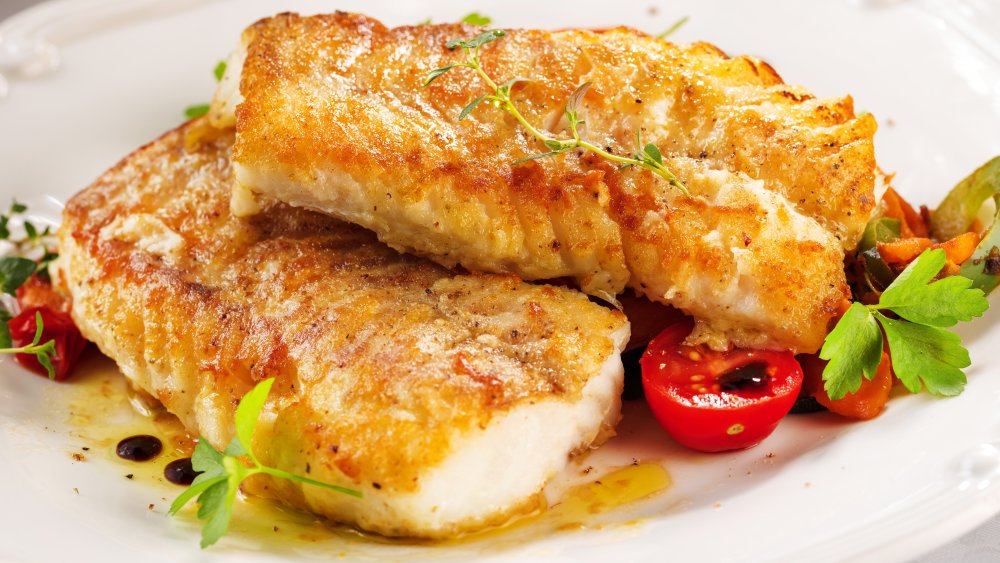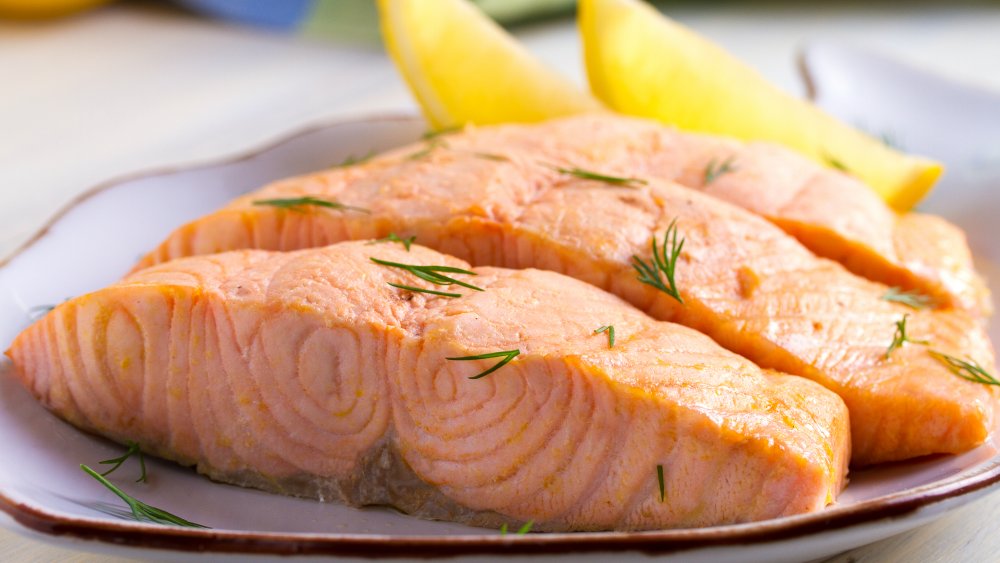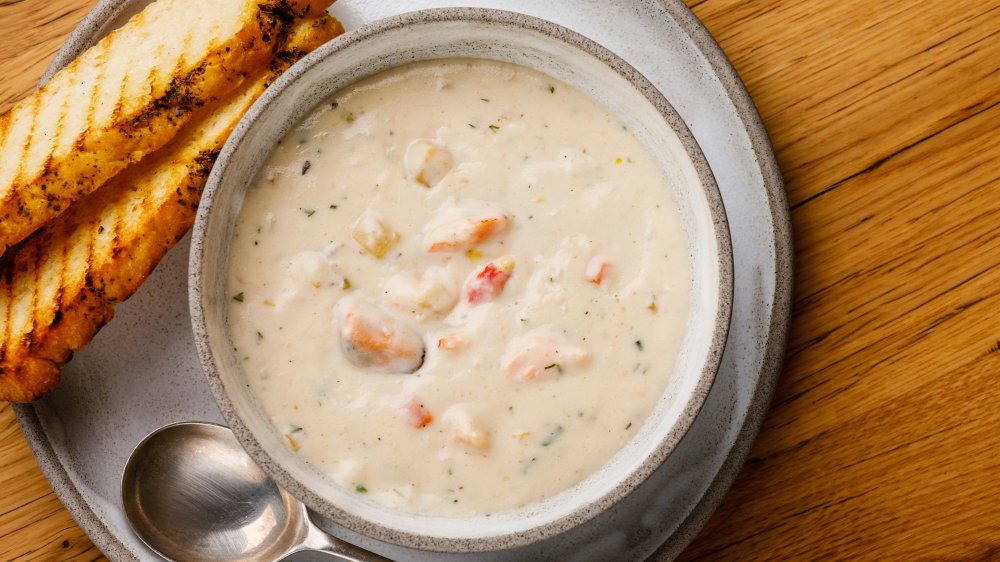This Is The Best Way To Reheat Fish
Buying and cooking fresh fish is quite a responsibility. It requires advanced planning, since you can't exactly let fresh fish sit in your fridge for days on end, and properly preparing it can be an exercise in vigilance. Whether you're pan-searing, grilling, or baking it, fish can go from done to overdone in the blink of an eye. And once you've plated and served your seafood masterpiece, you may feel compelled to eat it all in one sitting, or risk throwing out the leftovers because since when has anyone successfully reheated leftover fish?
But, after all that effort and attention, the last thing you want to do is waste your carefully-prepared meal. Well, the food geniuses over at Bon Appetit have a suggestion for us. Leftover fish doesn't have to end up dry and disappointing, if you know how to reheat it properly.
The secret to reheating leftover fish is, technically, not reheating it at all
It turns out the best method for reheating fish is to simply bring it to room temperature and stop there. In their guide to reheating leftovers, Bon Appetit instructs us to turn our oven on to 400 degrees and let the leftover fish sit on the stovetop as the oven heats up. Once the fish comes up to room temperature, helped along by the ambient heat from the oven, you're done. They say hot leftover fish is a no-go — room temperature should be your goal. This is the same method for reheating fried fish as well — room temperature is the limit.
While we can appreciate this method for its simplicity and what are sure to be good results, what if you don't have a freestanding oven? Or, what if room temp fish rubs you the wrong way? Don't worry, there's still hope.
Reheating leftover fish in a whole new dish ensures hot and tasty results
If the idea of room temperature leftover fish doesn't float your boat, consider re-purposing your leftovers in a new, hot dish. Food52 shares Bon Appetit's conviction that direct heat is a lose-lose for leftover seafood, resulting in sad, dried-out fish, and a foul-smelling kitchen. Their solution, and yours too if your kitchen or your appetite doesn't lend itself to the first method, is to incorporate your leftover fish into a fresh, new recipe. For example, combine your leftover fish with eggs, breadcrumbs, and a bit of mayo to make fish cakes, then fry them in a touch of oil or butter. Bring together some vegetables, stock, and cream for a pot of warm chowder and flake your leftover fish in just before serving. Or, whip up your favorite pasta, add your leftover fish to the warm sauce, toss, and serve.
Allowing your leftover fish to reheat among other ingredients, especially saucy or creamy ones, will prevent that dreaded dry texture, and you'll end up with a tasty new entree — and the pride of having successfully reheated your leftover fish.


